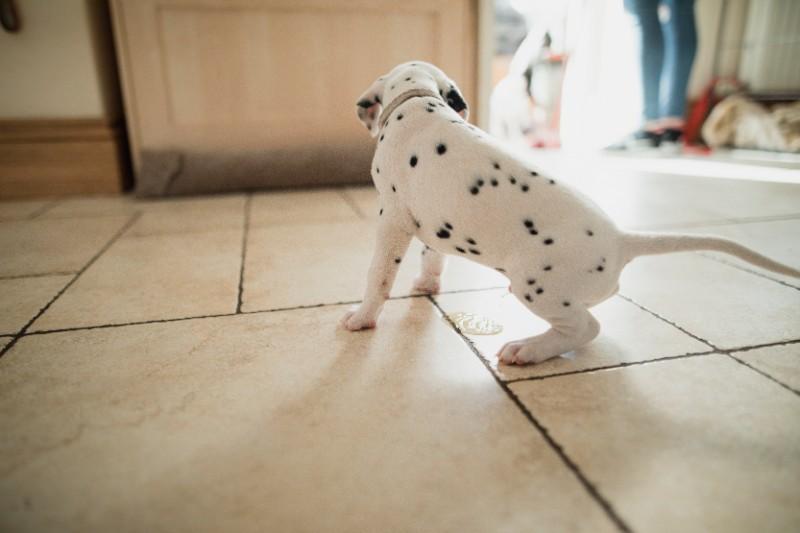Title: Understanding Why Your Dog Might Pee in the House: A Comprehensive Guide
Introduction:
For many dog owners, coming home to an unexpected puddle can be disheartening and frustrating. While we may joke about the oddity of “doggy telepathy” causing accidents in the house, the reality is far more complex. Whether you’re a seasoned owner navigating the challenges of training, or a new pet parent dealing with the occasional mishap, understanding why your dog pees indoors is essential for fostering a harmonious household. From behavioral quirks and medical concerns to stress-induced issues, this article seeks to unravel the mystery behind those indoor accidents and provide practical solutions that can help you and your four-legged friend thrive together. Join us as we delve into the reasons behind this common canine conundrum and explore strategies to reclaim your home from those little surprises.
Table of Contents
- Understanding the Reasons Behind House Soiling in Dogs
- Identifying Signs and Triggers of Urination Issues
- Effective Strategies for House Training Success
- When to Seek Professional Help for Urination Problems
- Q&A
- In Retrospect
Understanding the Reasons Behind House Soiling in Dogs
House soiling in dogs can be attributed to a variety of underlying issues that may not be immediately apparent to pet owners. Understanding these reasons is crucial for effective resolution. Some common factors contributing to this behavior include:
- Medical Issues: Conditions such as urinary tract infections, bladder stones, or diabetes can lead dogs to urinate more frequently or have accidents indoors.
- Age and Training: Young puppies may not have fully developed bladder control, while older dogs might struggle with incontinence.
- Stress and Anxiety: Environmental changes, loud noises, or separation anxiety can trigger a sense of insecurity in dogs, prompting them to soil their territory.
- Lack of Access: If dogs are unable to access outdoor spaces regularly due to schedules or physical barriers, they may resort to indoor elimination.
Behavioral issues can also play a significant role in house soiling. Oftentimes, dogs may lack proper house training, especially if their early experiences were inconsistent or unclear. Here are additional behavioral aspects to consider:
| Behavioral Trigger | Impact on House Soiling |
|---|---|
| Changes in Routine | Disruptions can lead to confusion and accidents. |
| Lack of Positive Reinforcement | Inconsistent corrections may hinder training progress. |
| Negative Associations | Punishment for accidents can worsen the behavior. |
Identifying Signs and Triggers of Urination Issues
Recognizing the early signs and triggers of urination issues in dogs can help prevent accidents and enhance your furry friend’s well-being. Look for indications such as:
- Frequent Urination: An increased need to go outside may signal a deeper issue.
- Straining: If your dog appears to struggle or take longer to urinate, it could indicate discomfort or infection.
- Excessive Drinking: A noticeable rise in water intake can be a telltale sign of health concerns.
- Behavior Changes: Watch for signs of anxiety or restlessness, which may accompany physical symptoms.
Additionally, identifying specific triggers can assist in managing your dog’s behavior. Consider creating a table to track patterns or situations that lead to indoor accidents:
| Trigger | Reaction |
|---|---|
| Changes in Routine | Increased accidents in the house |
| New Pets or People | Heightened anxiety and marking behavior |
| Weather Changes | Reluctance to go outside |
| Health Issues | Frequent urination regardless of circumstances |
Effective Strategies for House Training Success
House training your dog can be a rewarding yet challenging task. To achieve success, it’s essential to establish a consistent routine. Take your dog outside regularly, especially after meals, naps, and playtime. Pair this with positive reinforcement, such as treats or praise, every time they relieve themselves in the right spot. This encourages your furry friend to associate going outside with good behavior. Make it even easier by choosing a specific spot outdoors for your dog to do their business; this familiarity will help them understand where it’s acceptable to relieve themselves.
In addition to routine and rewards, staying patient and observant is key. Watch for signs that your dog needs to go, such as sniffing, circling, or whining. This awareness can lead to immediate action, preventing accidents indoors. If an accident does occur, avoid scolding your dog—this can create confusion and anxiety. Instead, clean the area thoroughly to eliminate any lingering odors that might encourage repeat behavior. Building a trusting relationship with your pet will pave the way for a smoother training process.
When to Seek Professional Help for Urination Problems
Recognizing when to get help for your dog’s urination issues is crucial for both your pet’s health and your peace of mind. If your furry friend has recently started urinating indoors, particularly if it’s a sudden change in behavior, it may indicate an underlying health concern. Signs that it might be time to consult a veterinarian include:
- Frequent urination: If your dog is urinating more often than usual.
- Straining to urinate: Showing signs of discomfort or difficulty while trying to urinate.
- Blood in urine: Noticing a reddish tint or spotting in your dog’s urine.
- Excessive thirst: Drinking more water than normal, which may be a symptom of diabetes or kidney issues.
- Incontinence: Sudden loss of control over urination, especially at night.
In addition to physical signs, behavioral changes may also warrant attention. If your dog exhibits signs of anxiety, restlessness, or a change in appetite, this could be linked to their urination habits. Keeping track of your dog’s urination patterns can provide valuable information for your veterinarian. Consider using a simple log table to track instances of indoor urination:
| Date | Time | Location | Notes |
|---|---|---|---|
| Oct 1 | 10:00 AM | Living Room | After playing |
| Oct 1 | 3:00 PM | Kitchen | Ignored for outdoor time |
| Oct 2 | 9:30 AM | Bedroom | Appeared anxious |
Q&A
Q&A: Understanding Why Your Dog Might Pee in the House
Q1: Why does my dog pee in the house?
A1: Dogs may urinate indoors for several reasons, including medical issues, anxiety, excitement, territorial marking, or simply insufficient potty training. It’s essential to observe the context surrounding the behavior to better understand its cause.
Q2: Could my dog’s indoor urination be a sign of a health issue?
A2: Yes, absolutely. Conditions such as urinary tract infections, bladder stones, or diabetes can lead to increased urination or a lack of control. If your dog suddenly starts urinating indoors and this is not typical behavior, a trip to the veterinarian is advisable.
Q3: How can I differentiate between marking behavior and a potty training issue?
A3: Marking typically involves small amounts of urine and tends to occur in specific locations throughout the house, while a potty training issue often results in larger puddles spread across various areas. If your dog lifts its leg or squats to pee in a particular spot (like corners or near furniture), it may be marking.
Q4: What steps can I take to reduce the chances of my dog peeing indoors?
A4: Consistency is key. Establishing a regular potty schedule, providing frequent outdoor breaks, and rewarding your dog for doing their business outside can reinforce proper behavior. Additionally, ensure that your dog has ample opportunities to relieve itself, especially after meals, playtime, or waking up.
Q5: My dog seems anxious; could this contribute to indoor urination?
A5: Yes, anxiety can significantly impact your dog’s behavior. If your dog struggles with separation anxiety, loud noises, or changes in the environment, these stressors may lead to accidents inside. Creating a calm, secure space, using pheromone diffusers, or consulting with a professional trainer might help alleviate their anxiety.
Q6: How can I address my dog peeing in the house without punishment?
A6: Focus on positive reinforcement rather than punishment. When your dog goes outside, shower them with praise or a treat. If accidents occur indoors, clean them thoroughly to eliminate any lingering scent, which can encourage repeat behavior. Consistency and patience will go a long way in helping your dog learn.
Q7: When should I consider consulting a veterinarian?
A7: If your dog’s indoor urination is a sudden change in behavior, accompanied by other concerning symptoms (such as straining to urinate, blood in urine, lethargy, or weight loss), or if they are unable to control their urination, it’s best to consult a veterinarian for a thorough examination.
Q8: Are there products available to help with indoor accidents?
A8: Yes! There are numerous pet-friendly cleaning products designed to effectively eliminate urine odor and stains. Additionally, consider using belly bands for male dogs or puppy pads to create a designated area for indoor relief during training.
Q9: Is it too late to train my older dog?
A9: Not at all! While older dogs may take a little longer to adjust, they are fully capable of learning new behaviors and routines. Tailoring your approach to their needs, being patient, and applying positive reinforcement can lead to effective results, no matter your dog’s age.
Q10: Can I prevent my dog from peeing indoors altogether?
A10: While it’s impossible to predict every situation, consistency in training, understanding your dog’s needs, and providing plenty of opportunities for outdoor breaks can significantly reduce the likelihood of indoor accidents. With dedication and care, most dogs can be taught to successfully communicate their needs.
In Retrospect
dealing with a dog that pees in the house can be a challenging experience for any pet owner. By understanding the underlying causes—be it behavioral issues, medical conditions, or simple accidents—we can take proactive steps to address the problem. Consistency in training, patience, and positive reinforcement are key elements to help our furry friends learn the appropriate habits. Remember, every pup is unique, and what works for one may not work for another. With time and understanding, you can cultivate a happy, harmonious home where both you and your canine companion can thrive. So, as you navigate the ups and downs of pet ownership, keep in mind that every challenge is also an opportunity to strengthen the bond between you and your dog. Happy training!


